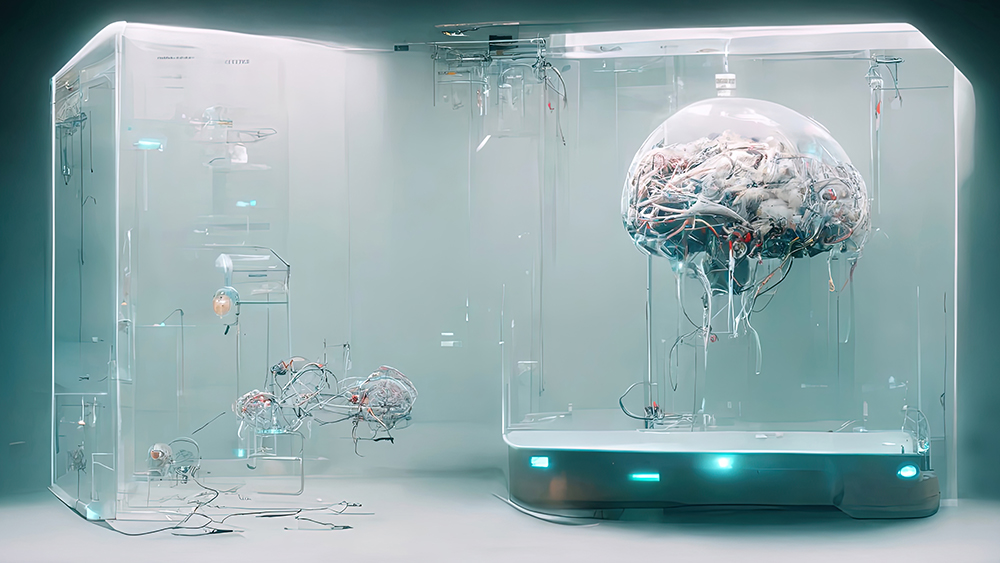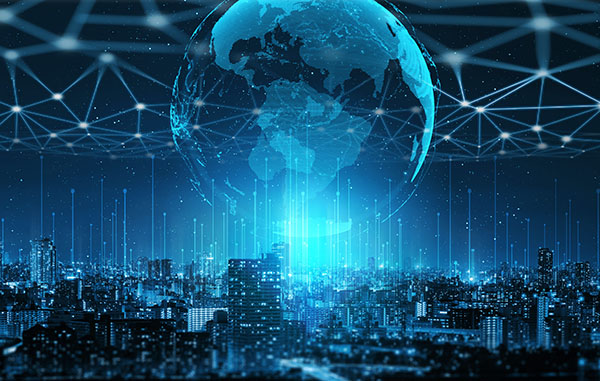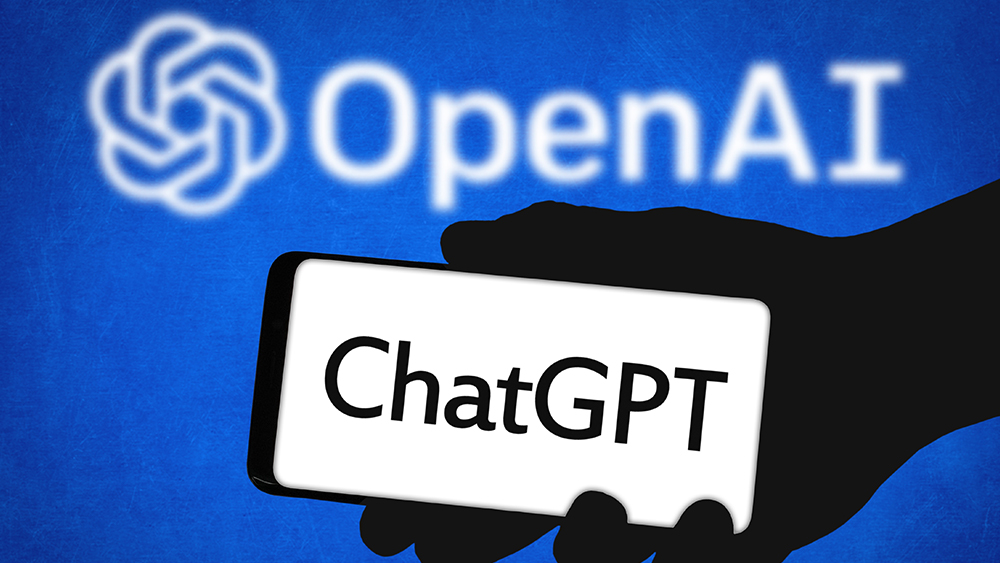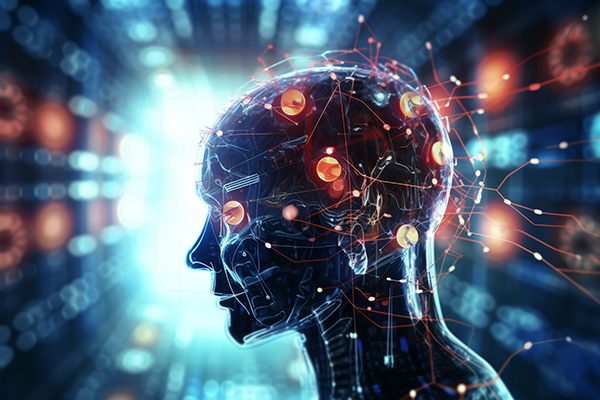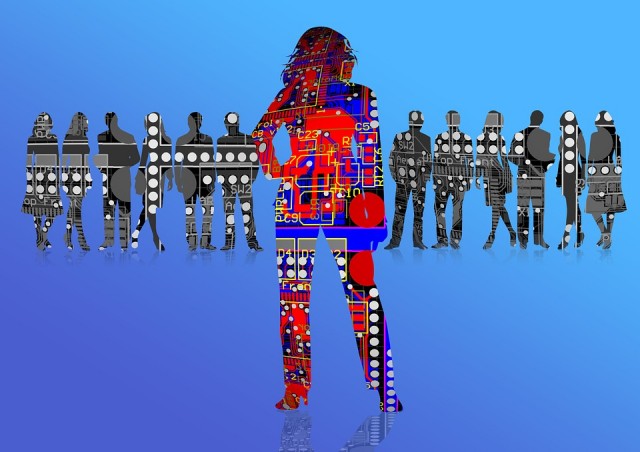Biden’s executive order to “censor” AI: Another measure to weaponize the federal government against free speech?
01/02/2024 / By Belle Carter

Back in October, President Joe Biden issued a “landmark” executive order (EO) regulating the development and utilization of artificial intelligence (AI) ensuring “trustworthiness” and preventing “discriminatory algorithms.” It is said to mitigate against the risks posed by the technology while promoting “responsible innovation.”
“The Executive Order establishes new standards for AI safety and security, protects Americans’ privacy, advances equity and civil rights, stands up for consumers and workers, promotes innovation and competition, advances American leadership around the world, and more,” a White House press release included, adding that the order delegates the power of implementing regulations to the National Institute of Standards and Technology (NIST) and enforcement to the Department of Homeland Security (DHS). NIST was instructed to set “rigorous standards” for extensive red-team testing to ensure safety before public release while the DHS will apply those standards to critical infrastructure sectors and establish the AI Safety and Security Board.
The said ruling was claimed to be a “step forward” by the Leadership Conference on Civil and Human Rights, an umbrella network of left-wing advocacy organizations, including the Southern Poverty Law Center and the Anti-Defamation League.
However, analysts are no longer fooled by measures where federal government agencies are caught using “third-party” organizations funded with taxpayer money to monitor, censor and implement double standards in the freedom to express, favoring leftist narratives. They’ve seen the weaponization on Big Tech and social media and now, AI. (Related: COGNITIVE CLEANSING – Censorship of truthful voices paved the way to train AI systems to LIE and DESTROY.)
According to blogger Jeremy Powell, who describes himself as a paleolibertarian on X, formerly known as Twitter, the recent EO follows a white paper published by the administration about a month earlier. “While the EO was explicit about ‘preventing discrimination’ by automated algorithms in housing and policing, it is eerily vague about the internet and online communications. The delegation of regulatory and enforcement powers is for applying them to ‘critical infrastructure sectors,'” he said, therefore, concluding that AI models are regulated by which critical infrastructure sector they belong to. “There are sections of the DHS dedicated to handling matters about the internet.”
My piece about the Biden’s recent AI Executive Order and “AI Bill of Rights” for @mises https://t.co/rqnvCPyL3V
— Jeremy Powell (@jpowell145) December 18, 2023
He further cited a paper titled “A Blueprint for an AI Bill of Rights,” which doesn’t limit itself to AI usage in healthcare, housing, finances and criminal justice, even though most examples featured in the white paper and proposed regulations talk about AI in those specific areas. “The talking points utilized for stringent regulation of AI utilization in the five aforementioned areas can translate beyond those areas, whether chatbots or social media algorithms, as the paper and executive order is part of the plan to tackle ‘inequity,'” he said and pointed to the two principles provided in the document.
According to him, Biden argued that one should be protected from unsafe or ineffective systems and consultation with stakeholders. Designs should proactively protect from harms … unintended, yet foreseeable, uses or impacts of automated systems and inappropriate or irrelevant data use in the system. Among the examples cited by “unintended, yet foreseeable” harm of automated systems is the allegation that counter quotes, criticism of racist quotes and journalism by black people are unfairly throttled or moderated.
The second point Biden advances is the prevention of algorithmic discrimination through “proactive equity assessments as part of the system design.” The president alleges that “automated systems can produce inequitable outcomes and amplify existing inequity,” and “data that fails to account for systemic biases in American society can result in a range of consequences.” An example cited was the automated contextualization of social media comments where statements like “I’m a Christian” are more than likely to be shared, while “I’m gay” might be blocked.
EO is a red flag, says think tank fellow
For American center-right think tank R Street Institute senior fellow Adam Thierer, the words in the EO that said “authenticating official content” are red flags as this paves the way for more online censorship.
“The Executive Order invites a lot of potential meddling by federal bureaucracies in AI markets and that includes the market for speech,” he told the Daily Caller News Foundation (DCNF). “Government efforts around ‘authenticating official content’ raise thorny questions about what constitutes disinformation or misinformation from a regulatory perspective.” He added that the public has already witnessed some policy fights about the DHS’ controversial Disinformation Governance Board and those squabbles can be expected to intensify as more bureaucrats seek to make determinations about what constitutes acceptable algorithmic speech.
Bookmark Censorship.news to get updates on the government’s efforts to suppress America’s free speech.
Sources for this article include:
Submit a correction >>
Tagged Under:
AI, Anti-Defamation League, artificial intelligence, big government, Bill of Rights, Censorship, conspiracy, cyber war, deception, discriminatory algorithms, First Amendment, free speech, freedom, future tech, Glitch, Joe Biden, left cult, Liberty, Southern Poverty Law Center, speech police, suppressed, thought police, Tyranny
This article may contain statements that reflect the opinion of the author
RECENT NEWS & ARTICLES
COPYRIGHT © 2017 FUTURETECH.NEWS
All content posted on this site is protected under Free Speech. FutureTech.news is not responsible for content written by contributing authors. The information on this site is provided for educational and entertainment purposes only. It is not intended as a substitute for professional advice of any kind. FutureTech.news assumes no responsibility for the use or misuse of this material. All trademarks, registered trademarks and service marks mentioned on this site are the property of their respective owners.





